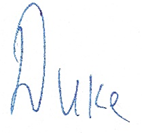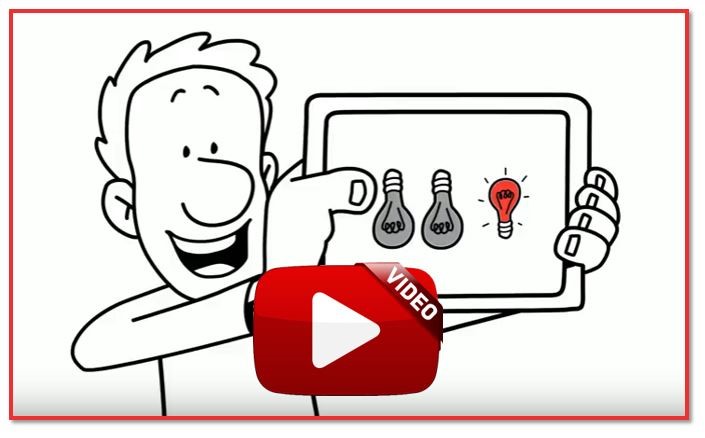It’s Time for A Restart!
Well-run companies take the time to evaluate and plan – most do this once a year, some more frequently than that. It is a particularly good practice to take a step back periodically to assess where you are, set goals, and put plans in place to reach them. A common practice is to do so based on the calendar year. Back in our January newsletter we encouraged our readers to ask “tough questions” about their marketing, and plan for the year.
But…what a year 2020 has been!? Who could have imagined back then that everything we all planned and projected would be turned upside down? So, even if you made a good plan and followed it, the pandemic forced us all to make changes and find new paths. What’s interesting is that some companies completely froze (due to circumstances or lack or decision), but many have adjusted to the current circumstances. What made it so difficult is the uncertainty of how long the pandemic would last… and how do you make plans and adjust operations when you don’t know how long you have to operate based on a ‘contingency plan’.
Truth be told, we still don’t know how long the pandemic will last, and for how long we will have to live our lives and run our businesses under social distancing, travel, and other restrictions. However, it is pretty clear now that pandemic or not, things have changed, and there is going to be a ‘new normal’ even after the initial surge of COVID-19 subsides. Nobody knows exactly what the ‘new normal’ will be in the long run, but some elements that have emerged are probably going to stick, due to an abundance of caution, and because we have all experienced them, and seem to like them.
I would venture to guess, for example, that controlled physical contact, distant learning, remote working, and online meetings will continue to be common even after the pandemic subsides and a vaccine for COVID-19 is discovered. Again, I am not saying that I know what the long-term ‘new normal’ will be exactly, but some of the above-mentioned practices, as well as others, will continue for the foreseeable future.
So, it’s time for a restart! Yes, it is August and we typically do this at the end of the year or perhaps early in the new year, but circumstances dictate that we look at what we do in marketing (and otherwise) with a critical eye and recalibrate accordingly! Go back to our January newsletter and ask the “tough questions” again, based on the new reality:
- Does your marketing fit the new market conditions?
- Are you providing your customers with what they want now?
- Are you delivering your product or service in ways that the target audience wants them delivered now?
- Are you communicating with and informing your target audience where, when, and how they need you to?
- Are the channels still relevant?
- Are you allocating resources to where they should be utilized?
The most important point we are making is this: Do not wait for things to go back to where they were in January 2020 – Nothing will ever be the same as it was, and you have to adjust to succeed!
If you want a fresh perspective on your marketing during the ‘new normal’, we are here to help. We have been working with our clients during the pandemic to make changes to help them survive and thrive, and now we’re working with them on what’s after – we can do the same for you!
Duke Merhavy, MBA, Ph.D.
President & Chief Marketing Officer
What Is Fractional CMO & Marketing?
Fractional CMO & Marketing is ‘Your Outsource Marketing Department’ when you need expert marketing leadership and marketing services to accelerate growth and improve profitability, but you’re not quite ready to hire a full-time Chief Marketing Officer or your own marketing department. Our unique arrangement is the most efficient, innovative, and cost-effective formula for you. Click on the image to the left to watch a short video.
We Help When You Need To:
- Generate more of the right kind of leads
- Close more sales faster
- Get repeat sales
- Formulate a more effective message
- Produce powerful sales tools
- Establish brand awareness, recognition, and preference
- Differentiate your brand from the competition
- Improve customer satisfaction and loyalty
- Develop lasting relationships with customers
- Introduce new products
The Tesla Logo – Meaning Behind the Meaning
By Ginger Mace, Editor and ProducerThere is a highly stylized yet clear ‘T’ shape in the Tesla logo. Does it mean the obvious, or is there more to it? First, we know Tesla Motors was named after the famous electrical engineer and inventor of alternating current (AC), Nikola Tesla. As you may know, the Tesla Roadsters use AC motors. What you may not know is the engine used in these modern-day electric cars is actually based on Nikola Tesla’s 1882 design. No matter how long something has been around – if it works, it works!
The shield or badge shape of Tesla’s logo is said to represent many attributes of the company and its mission. Even though Tesla had the differentiation of being electric, the company still had to compete with traditional, gas-powered cars. The benefits of the Tesla engine just weren’t seen as that important to consumers, and when you consider the first electric car in the US was made around 1890, you begin to wonder if it will ever catch on as mainstream.
Still, Tesla pushed forward with their Roadster model, hoping the elegant and sporty model with a 250 mile range after charging for 2 hours would clearly demonstrate long-distance travel in an electric vehicle wouldn’t be that different than the same journey in a combustion engine. The badge in Tesla’s logo embodies all of these ideas, according to the designers.
The ‘T’ also stands for Tesla, though that isn’t as interesting or exciting as what Musk tweeted. Fans of the brand have come up with alternative – and definitely not confirmed by the company – meanings of the logo. Some of the more plausible ones include a Nikola Tesla coil and part of the schematics symbol for a battery.Though fun to think about, we doubt a self-defense knife or cat’s nose is what designers were thinking of when they came up with Tesla’s logo. Whatever the exact meaning of the logo, it has come to represent innovation in car design, and we can’t wait to see what the next generation of Teslas will look like!Fractional CMO & Marketing Welcomes New Social Media Manager
We are pleased to welcome Michelle Mahurin to Fractional CMO & Marketing as our new Social Media Manager. Michelle manages our clients’ various social media accounts, posts for them, and interacts with their customers when needed. Read more about Michelle’s background here.
An Order of Viral Marketing, Hold the Videos Please
By Ginger Mace, Editor and ProducerLast month we looked at viral marketing, and some advantages and disadvantages of it. As we mentioned then, viral marketing is creating awareness through specific information being shared quickly, usually by the sharer’s choice, can be word of mouth and resemble an endorsement, and the spread resembles that of a contagious virus.
Most people associate the term “going viral” with social media – usually YouTube specifically – because of how simply, rapidly, and immediately content there can be shared. Considering the prevalence of platforms to share information online, these tools certainly help with a goal of going viral. But looking at the examples below, a business, idea, or entity can go viral without a video (and sometimes, without even a username).
Hotmail – 1996Hotmail was clever from the get-go in July 1996, when it launched on July 4th (Independence Day), and touted itself as “freedom from ISP-based email”. Prior to this service, a customer’s email address was through their chosen ISP (Internet Service Provider). AOL was a popular choice, being among the initial crop of the 1990’s dial-up services that included Compuserve, Mindspring, Prodigy, and Earthlink. The name “Hotmail” was ingenious itself, coming from HTML, a programming language used to create webpages. At the bottom of every email sent through Hotmail, the service would include their own signature, marketing their email solution, for free, to whomever saw that email. This is a good example of going viral, as this method of marketing contributed heavily to the more than 8.5 million subscribers by December 1997, and that prompted Microsoft to buy Hotmail for an estimated $400 million.
The Blair Witch Project – 1999
Imagine a time before social media, Wikipedia, and when we could ask Google anything. In the grand scheme of things, it wasn’t that long ago that the Internet was more of a strange, unfamiliar place than a we-need-this-to-survive-life-and-ask-it-anything place. So, naturally, when The Blair Witch Project website went live, with details of a film put together from authentic documentary footage, people were fascinated… in a cryptic way. There was nowhere to get answers about whether the videos were real or not, what happened to the people who went looking for the Blair Witch, and if she was just an urban legend.
Not only was the video footage shown on the website pretty convincing, but other details were as well – from phony police reports to a timeline of “known information” on the Blair Witch. This incredibly comprehensive web presence also served as a preparatory course for the actual movie. The budget for The Blair Witch Project was less than $100,000, and the studio didn’t expect it to be a hit, so they chose to spend a little bit of money on a website instead of a much larger investment in TV ads. This film is the first to use the power and reach of the Internet for marketing purposes, and considering we are still talking about the campaign over 20 years later, the film had a worldwide gross of about $250 million, and sequels were made, it’s a definite viral marketing success!
Elvis the Pelvis -1956
In 1956, rock ‘n’ roll music and juvenile delinquency were in lockstep – the former inevitably led to the latter, so the best thing to do is to keep your children away from it altogether. We all know how well it works to tell kids to not do something, right? Well, that’s just what happened during 1956, when Elvis Presley was rolled into the negative publicity that rock music was getting. How he moved and how he sang were all signs of “sex-hot flame” and overindulgence, and soon kids would be going off the rails, ending up in “juvie” faster than you can pull a needle off a 45. If critics and journalists weren’t condemning Elvis, then they were mocking and poking fun at him because of his accent, the colors and style of his clothes, his hair and sideburns, and being a “hillbilly singer”. The more they went after Elvis, the more popular he became. Concerts were sold out, with fans throwing themselves at the stage. His hairstyle, that received so much negative press, was being copied by teens across the country. Elvis Presley went viral in 1956 because he was the subject of such strong opinions, young people just had to find out the truth for themselves (much to the chagrin of parents everywhere).
For more in-depth information on viral marketing, and our list of notable advantages and disadvantages, check out the ‘Viral Marketing Explained’ article in last month’s newsletter.
Take Advantage of Us
Call us at 888-412-2236 or use the button below to request a complimentary Marketing Needs Assessment, or to ask us a question regarding your most pressing marketing or sales challenges.





